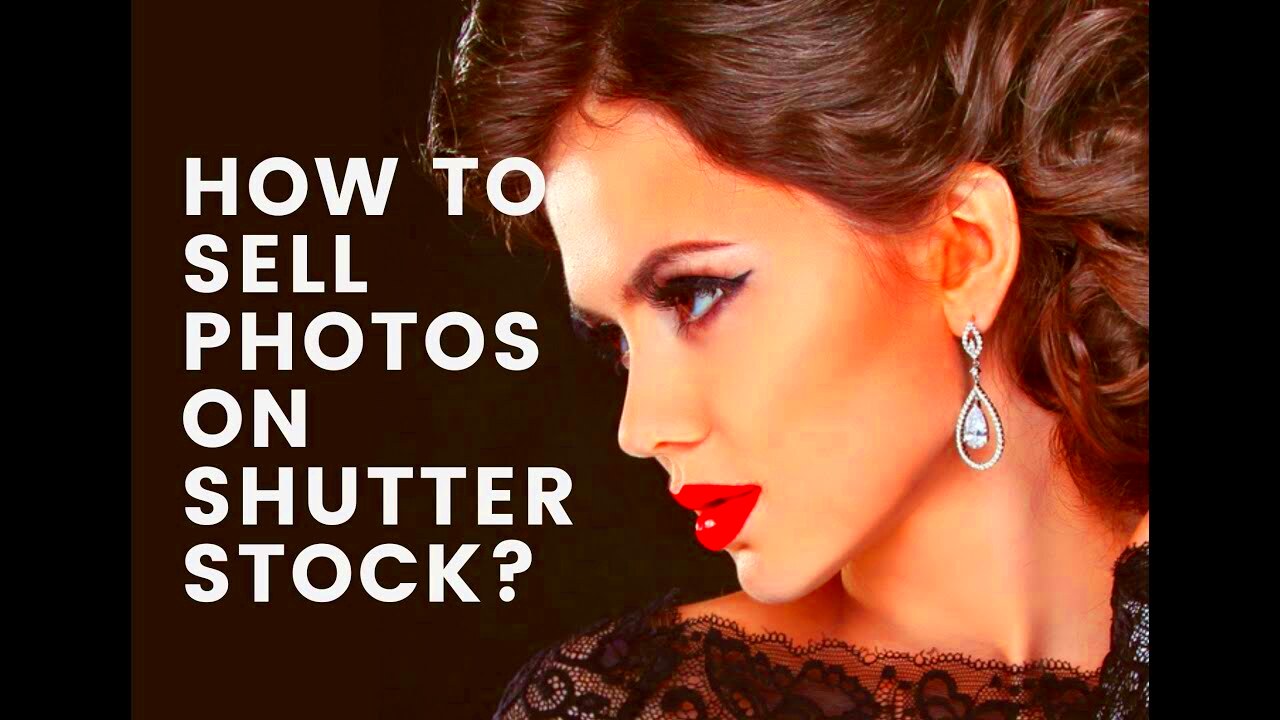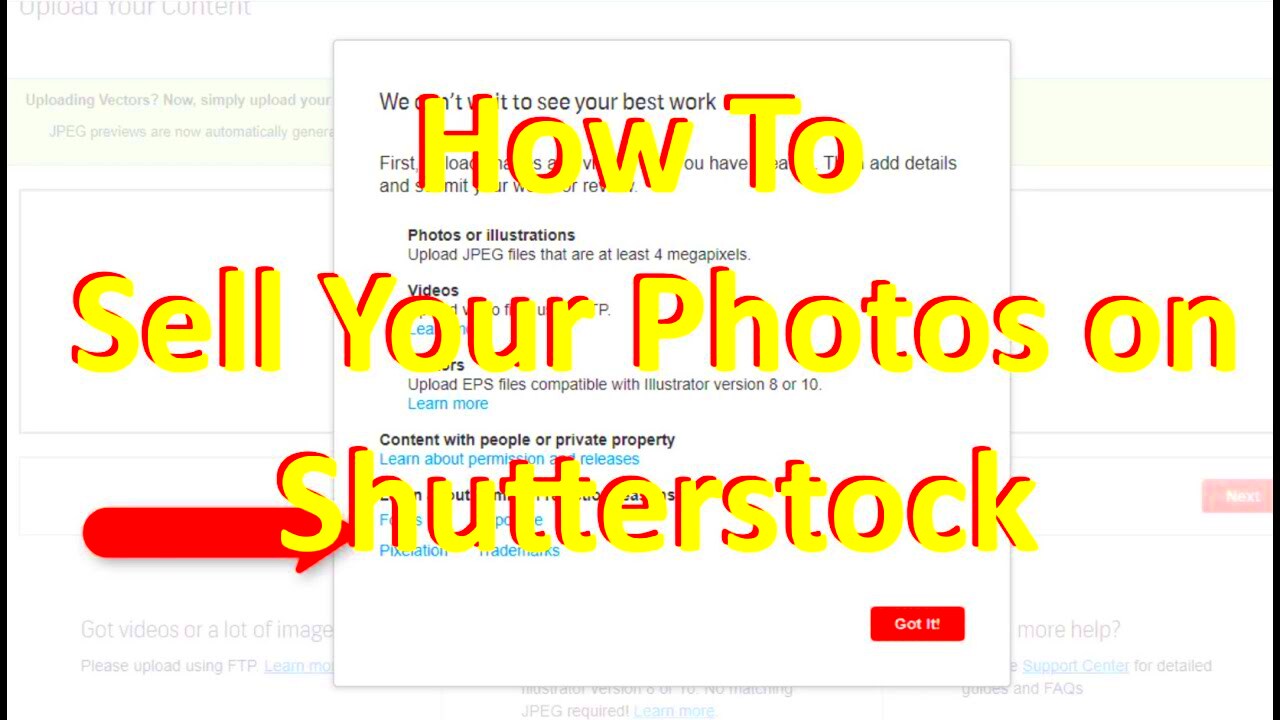If you have a talent for capturing moments through a lens you've likely come across
Shutterstock. It's a prominent platform that allows photographers and creators to showcase and sell their work. However before diving into it I used to ponder how the entire process functions. Well it's quite straightforward. You share your images and individuals or businesses worldwide purchase licenses to utilize them.
Shutterstock serves as a bridge between you as a creator and those seeking new and unique content.As a contributor you have the power to curate your own collection. You can choose to highlight nature scenes urban landscapes or even moments from everyday life. There’s plenty of interest in almost every kind of photograph. And here’s the exciting part once you upload your picture it remains available potentially generating revenue for you over the years!
Shutterstock works by giving you a cut of the fee whenever someone uses one of your pictures. It’s a way to make money without actively selling your work and also an opportunity to showcase your talent to people all over the world.
Why Should You Sell Your Photos on Shutterstock?

To be completely frank when I initially considered the idea of selling pictures on the internet I had my doubts about its value. However after taking the step I discovered that it's incredibly fulfilling to make money doing something I'm passionate about – photography! If you share my sentiments chances are you have a treasure trove of images gathering dust on your computer. Why not put them to better use?
Here are some reasons why it can be beneficial to sell your work on Shutterstock.
- Global Exposure: Your photos will be available to millions of buyers across the world.
- Passive Income: Once your photos are uploaded, they can keep generating revenue for years without any extra effort.
- Creative Freedom: You get to decide what type of photos you want to sell.
- Low Barrier to Entry: Whether you're a professional or just starting out, you can sell your photos on Shutterstock.
To be honest, what truly mattered to me wasn’t the extra cash but the recognition of my efforts from strangers. It brought a feeling of satisfaction, as if my creativity had its own existence.
How to Get Started as a Shutterstock Contributor

Getting started on
Shutterstock can feel a bit daunting, but believe me it’s not as hard as it appears. When I first joined I was clueless about how to go about it. So let me walk you through the straightforward steps I took to embark on my path as a contributor.
- Create an Account: Go to Shutterstock’s Contributor page and sign up. The process is pretty straightforward—just provide basic details like your name, email, and a few pieces of identification.
- Upload Your Best Work: Start with your strongest images. Quality over quantity is key here. Shutterstock has a review process, and only high-quality images will be accepted.
- Tag Your Images: This part is crucial. Proper keywords will help your photos be found by buyers. Use relevant, detailed tags that describe your image well.
- Stay Patient: Sales won’t pour in immediately. It took me a while to make my first sale, but don’t be discouraged. The more you upload, the higher your chances of getting noticed.
After going through these steps you’ll be recognized as a
Shutterstock contributor. It may take some time to get used to it but with practice you’ll become more comfortable just keep trying new things and honing your skills!
Types of Photos That Sell Well on Shutterstock
When I began sharing my work on Shutterstock I was uncertain about the types of photos that would resonate with people. Should I go for landscapes, portraits or just everyday things? It can be tricky to figure it out at first. However as time went on I started to observe some trends regarding the kinds of photos that truly grab the attention of buyers. And to my surprise it's not always the elaborate shots taken with top notch gear that sell the best.
Here are some types of photos that tend to do really well.
- Everyday Lifestyle Photos: Candid moments of people doing ordinary things like cooking, working, or just relaxing. These photos appeal to a wide range of buyers because they are relatable.
- Business and Technology: Images of modern offices, computers, meetings, and technology-related scenes are in high demand. Think of how many websites and blogs need these kinds of visuals.
- Nature and Landscapes: Pictures of beautiful landscapes, wildlife, or even close-up shots of flowers and plants can sell really well. I once uploaded a simple photo of a local park, and it ended up being one of my top sellers!
- Abstract and Backgrounds: Abstract patterns or textures make great backgrounds for various projects. These are popular with graphic designers and marketers.
- Health and Wellness: With the increasing focus on fitness, wellness, and mental health, photos that depict these themes are in high demand.
What I learned from my journey is not to overthink what products will be popular. Instead share a variety of pictures and allow the customers to make their choice. You might be surprised by the image that strikes a chord with someone across the globe!
Best Practices for Uploading Your Photos
Submitting photos to Shutterstock goes beyond simply clicking the button. Theres a skill involved if you aim to boost the likelihood of your pictures catching attention. I discovered this through experience when my initial uploads didn’t gain much popularity. Allow me to save you some effort by sharing a few strategies that have proven effective for me.
Here are a few suggestions that could have an impact.
- Quality Over Quantity: Shutterstock values quality more than sheer volume. Make sure your images are sharp, well-lit, and free from noise or grain. Avoid uploading blurry or poorly composed photos.
- Use Descriptive Titles and Keywords: Don’t underestimate the power of good keywords. When I started using more specific keywords, my photos started getting more views. Think about what a buyer would search for and use those words.
- Edit Your Photos Before Uploading: Sometimes, a little editing can turn a decent photo into a great one. Adjusting the brightness, contrast, and cropping can make your photos stand out.
- Be Consistent: Upload regularly. I found that uploading a few photos every week keeps my portfolio fresh and improves visibility on the platform.
- Follow Shutterstock's Guidelines: Every platform has its own set of rules. Make sure your photos adhere to Shutterstock’s content guidelines, especially regarding model releases and intellectual property rights.
By adhering to these guidelines, you can create a collection that appeals to potential buyers and boosts your likelihood of achieving sales. It was effective for me and Im confident it will yield results for you as well!
Understanding Shutterstock's Licensing and Royalties
When I began my journey as a Shutterstock seller I didn’t have a grasp on the intricacies of the licensing and royalties system. I naively thought that purchasing my photo would automatically mean getting paid. However there’s more to the process and grasping it can significantly boost your income potential.
Shutterstock operates on a royalty-based model. Here's a breakdown of how it works:
| License Type | Description | Contributor Earnings |
|---|
| Standard License | Used for personal or business projects. Buyers get the right to use your photo in advertisements, websites, or printed materials. | Anywhere between 15% to 40% depending on your earnings tier. |
| Enhanced License | This allows buyers to use your photo in products for resale or in high-print runs. | You earn a higher royalty—typically more than the standard license. |
As you sell more pictures your level of income will go up along with your royalties. When I first began I was in the bracket but over time I’ve progressed and witnessing the boost in my earnings has been quite encouraging.I really liked how open Shutterstock is with their system. You can easily keep an eye on your sales and royalties using the contributor dashboard and its all quite simple. There are no secret charges or unexpected surprises.Grasping how licensing and royalties work can assist you in managing your expectations and shaping your approach as a contributor. Keep in mind that it’s a journey but one that holds great potential for rewards!
Common Mistakes to Avoid When Selling Photos on Shutterstock
When I joined Shutterstock I assumed it would be a matter of snapping some photos and sharing them. However, like many newcomers I stumbled upon a few challenges during the process. Some were minor while others could have had significant consequences if I hadn't learned from my experiences. So if you're embarking on this journey let me guide you in steering clear of the common traps that I and many others have faced.
Here are some mistakes to watch out for:
- Not Doing Enough Research: It’s tempting to upload anything and everything you have on your camera roll, but not all photos will sell. Spend time researching what types of images are in demand. I used to upload random shots, but the moment I started focusing on trending themes, my sales improved.
- Poor Keywording: One of the biggest mistakes I made was being too casual with my keywords. A good photo with bad keywords is like a shop in a hidden alley—it’s hard to find. Be specific with your keywords, and think like a buyer. This alone can boost your visibility.
- Over-editing Photos: It’s easy to go overboard with editing, adding too much saturation, sharpness, or filters. I remember one of my earlier uploads looked so unnatural after I tweaked it that it was rejected. Keep it simple, and only enhance where necessary.
- Ignoring Shutterstock's Guidelines: Shutterstock has strict guidelines, especially when it comes to copyrighted content and model releases. I once uploaded a picture of a local monument without realizing it was protected by copyright law. Needless to say, it got rejected.
Steering clear of these pitfalls will make your journey as a contributor much more seamless and increase the likelihood of your photos getting accepted and sold. Seriously, taking cues from the experiences and missteps of others can spare you a ton of time and hassle!
FAQs About Selling Photos on Shutterstock
When I began my journey on Shutterstock I was bombarded with questions just like you probably are now. Through the course of time I managed to find the solutions sometimes by conducting research and other times by learning through experience. Allow me to share some of the inquiries that contributors often have along with the insights Ive gained during my journey.
Q: How much can I earn from selling photos on Shutterstock?
The amount you earn depends on factors like the number of photos you have, the demand for them and your level of activity. There have been months where I made just a few dollars and others where it was more significant. By uploading and optimizing your pictures you can increase your likelihood of generating a steady income.
Q: Do I need professional equipment to sell photos?
No way! I began my photography journey with a simple DSLR camera and these days I often snap pictures using my phone. What truly counts is the clarity of the picture not the gear you have.
Q: Can I sell photos that include people?
A: Absolutely, but you need to have a model release form signed by the individual in the picture. This is a requirement by Shutterstock to safeguard both you and the purchasers. If you dont have it the photo will be declined.
Q: What if my photo is rejected?
A: Stay positive. It happens to everyone. Take a look at the feedback, address any problems such as quality or content and give it another shot. Rejections are simply a stepping stone in the journey.If you have any additional inquiries feel free to explore Shutterstock's contributor resources or connect with other contributors like myself. The community is quite helpful and we've all been through similar experiences!
Conclusion: Making the Most of Your Shutterstock Contributor Journey
My experience with Shutterstock goes beyond simply selling pictures. It has been a journey of personal growth, discovery and exploring fresh avenues to showcase my creativity. One important lesson I’ve taken away is the significance of staying consistent. Make it a habit to upload content experiment with different ideas and don’t hesitate to venture outside your comfort zone.I still vividly recall the thrill of making my sale. It was only a small amount but it felt like a significant achievement. In that instant I realized that this venture held greater potential for me. It was a space where I could blend my creativity with new possibilities. And it can be just as transformative for you too.So, what can we learn from this? Its important to be patient, keep your enthusiasm alive and most importantly, savor the journey. Whether you close a deal or a hundred every picture you share moves you ahead. The more effort and originality you pour into this the more rewarding your Shutterstock experience will become. And who knows? Your next submission could turn out to be your blockbuster hit.
 To be completely frank when I initially considered the idea of selling pictures on the internet I had my doubts about its value. However after taking the step I discovered that it's incredibly fulfilling to make money doing something I'm passionate about – photography! If you share my sentiments chances are you have a treasure trove of images gathering dust on your computer. Why not put them to better use?
To be completely frank when I initially considered the idea of selling pictures on the internet I had my doubts about its value. However after taking the step I discovered that it's incredibly fulfilling to make money doing something I'm passionate about – photography! If you share my sentiments chances are you have a treasure trove of images gathering dust on your computer. Why not put them to better use? Getting started on Shutterstock can feel a bit daunting, but believe me it’s not as hard as it appears. When I first joined I was clueless about how to go about it. So let me walk you through the straightforward steps I took to embark on my path as a contributor.
Getting started on Shutterstock can feel a bit daunting, but believe me it’s not as hard as it appears. When I first joined I was clueless about how to go about it. So let me walk you through the straightforward steps I took to embark on my path as a contributor.
 admin
admin








